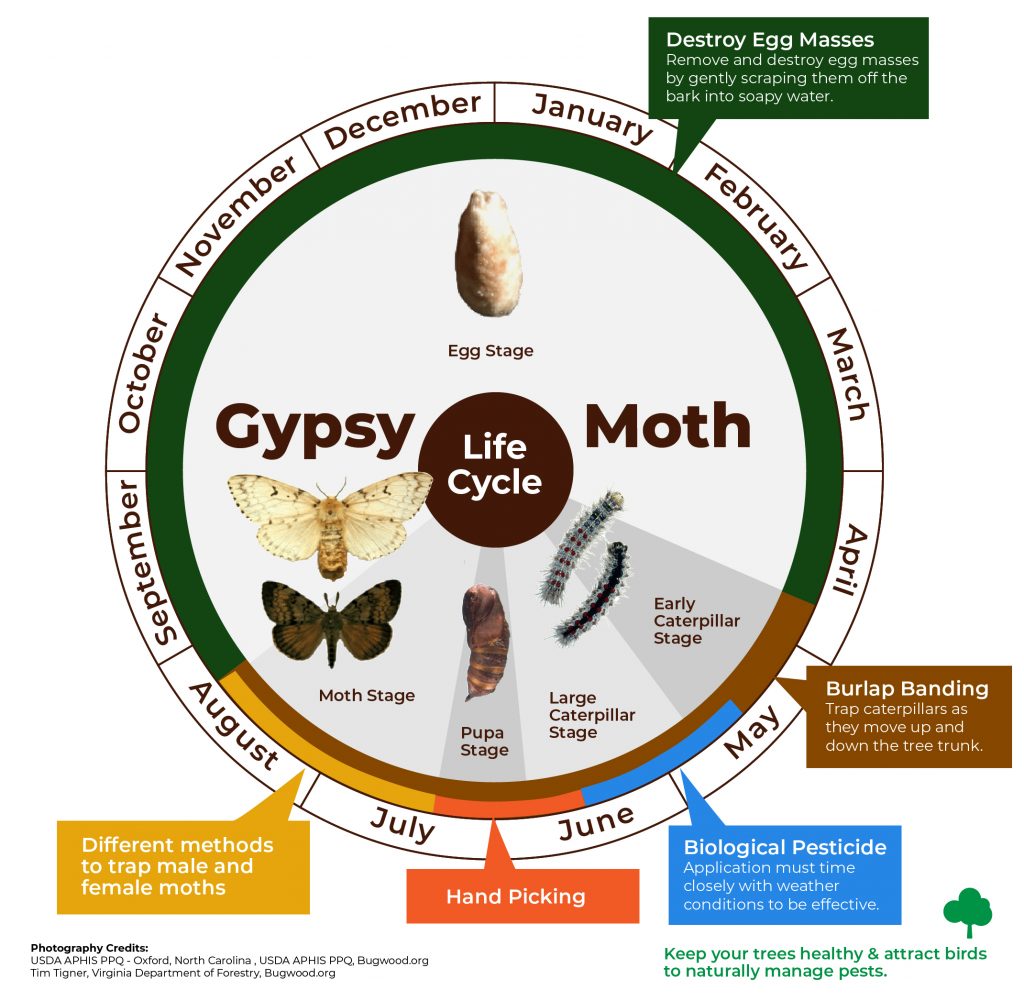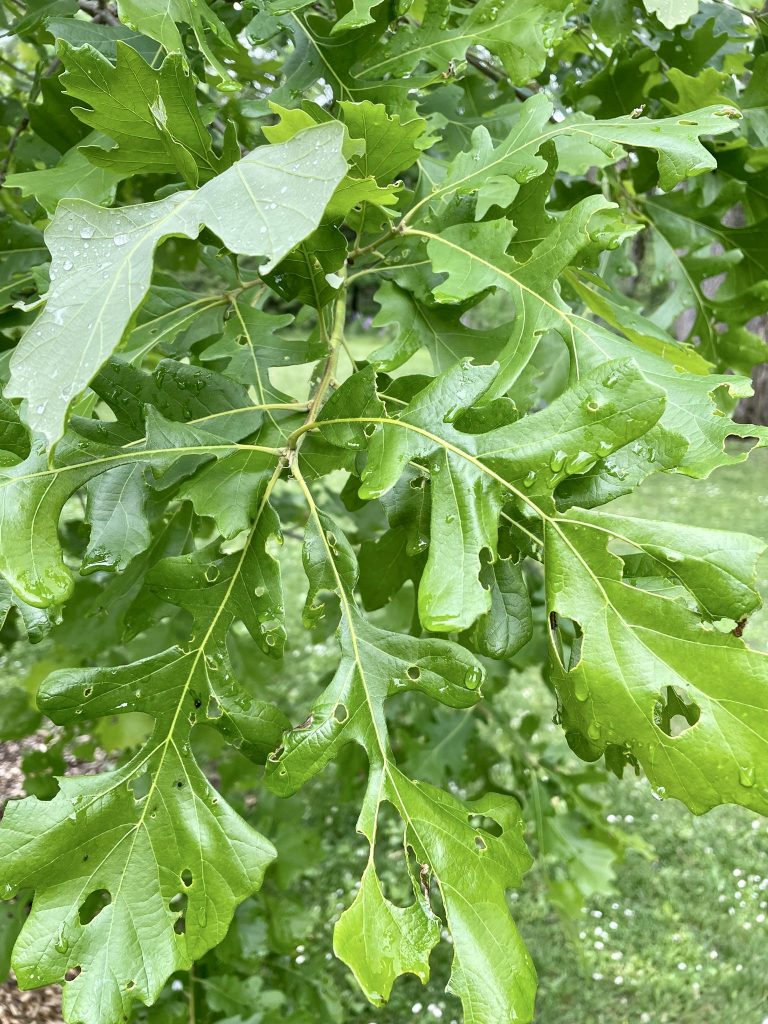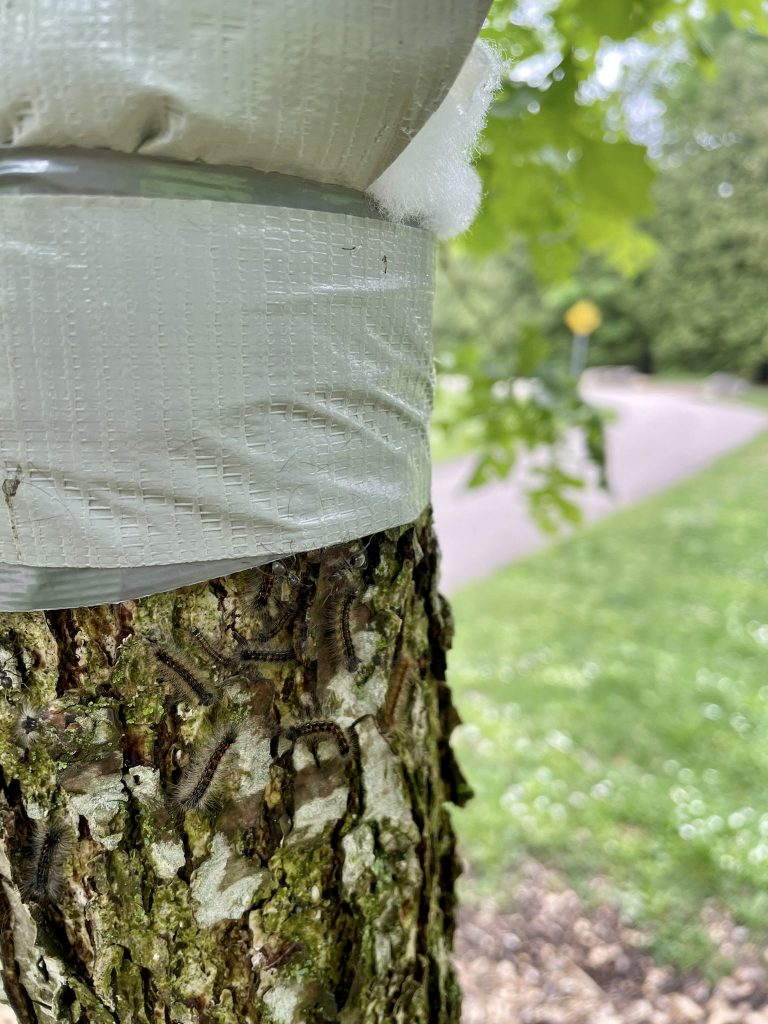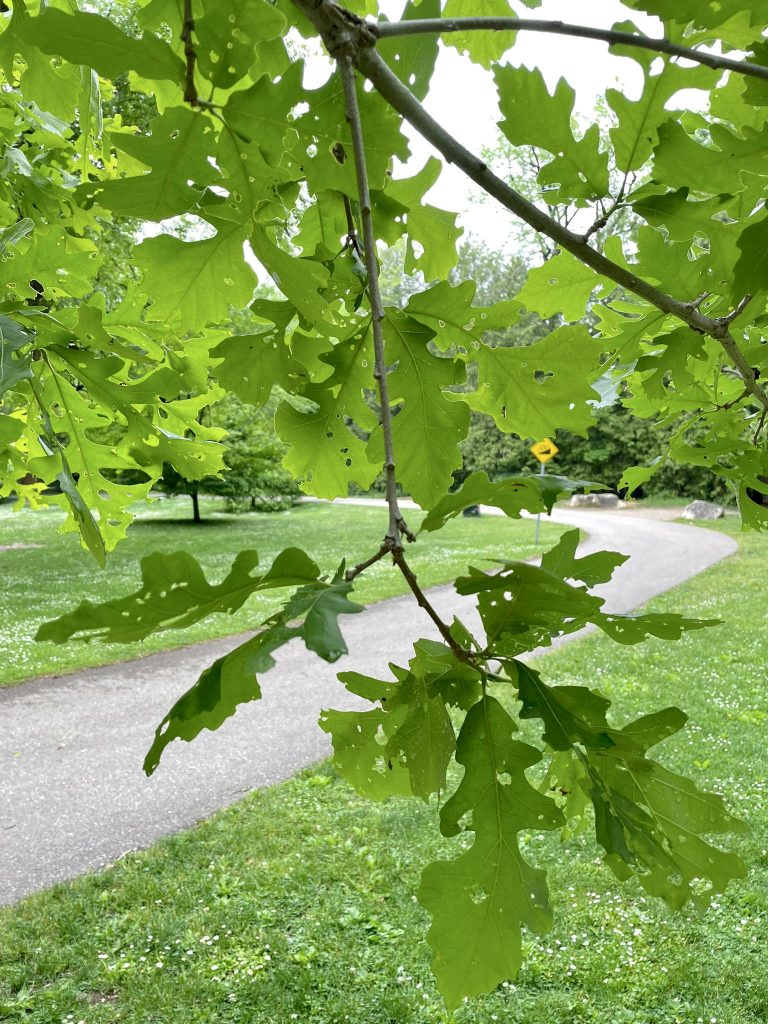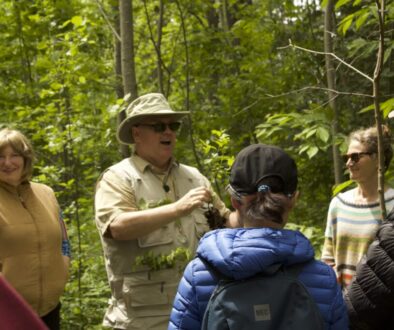The Gypsy Moth
It is now the season to go out into our yards and communities to look for and remove gypsy moths and larvae. This article will explain a little more about the gypsy moths, why they are a such problem in our community, and how to trap and get rid of them.
Please note: this article only pertains to trees on private property. If you see gypsy moths in Centre Wellington, please report to parks@centrewellington.ca. Do not treat public trees.
What is it?
The Gypsy Moth is a destructive hardwood tree pest. The damage caused by gypsy moth larvae devastates trees in regions across North America. The spread of gypsy moths is naturally slow, but accidental transportation of the eggs has accelerated its regional spread.
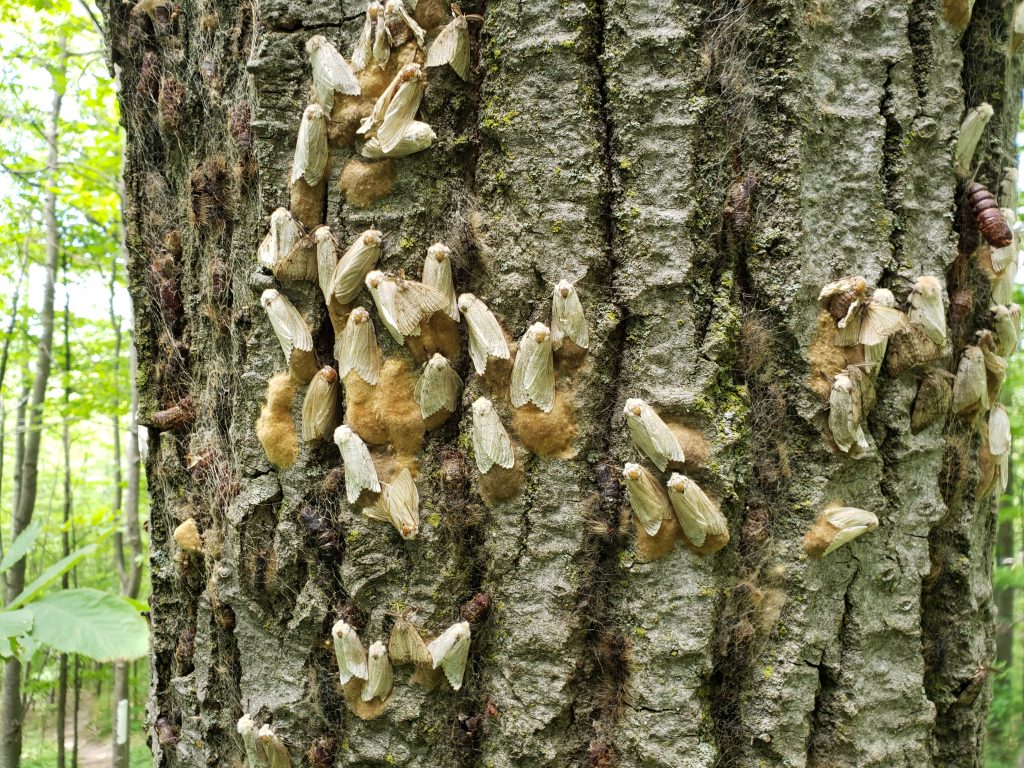
Why are they a problem?
Defoliation is the primary concern of a gypsy moth infestation. One larva is capable of eating one square metre of tree canopy. Although trees can recover from total defoliation, trees that are repeatedly defoliated may become weakened and have their growth stunted, and are much more susceptible to disease and insects. Following a large gypsy moth infestation, these weakened trees gradually die, resulting in a large reduction of our tree populations.
What can we do?
- Use local firewood, don’t transport it.
- Inspect your outdoor transportable items (e.g.: trailer, boat, tent, etc.) for any stage of gypsy moth life before moving or vacationing in another region.
- Keep your trees healthy, so they are better able to ward off attacks. Water trees when dry and protect their root zones from damage.
- Remove picnic tables, swing sets and lawn furniture from around the bases of trees – these provide shelters for the gypsy moth.
Where to find them.
Moths and larvae can be found:
- On the underside of branches
- Under lifted tree bark
- On tree trunks
- On fences
- On or in firewood
- On or under outdoor furniture
- On swing sets
- On or under boats
- On or under trailers
- Under the eaves of buildings
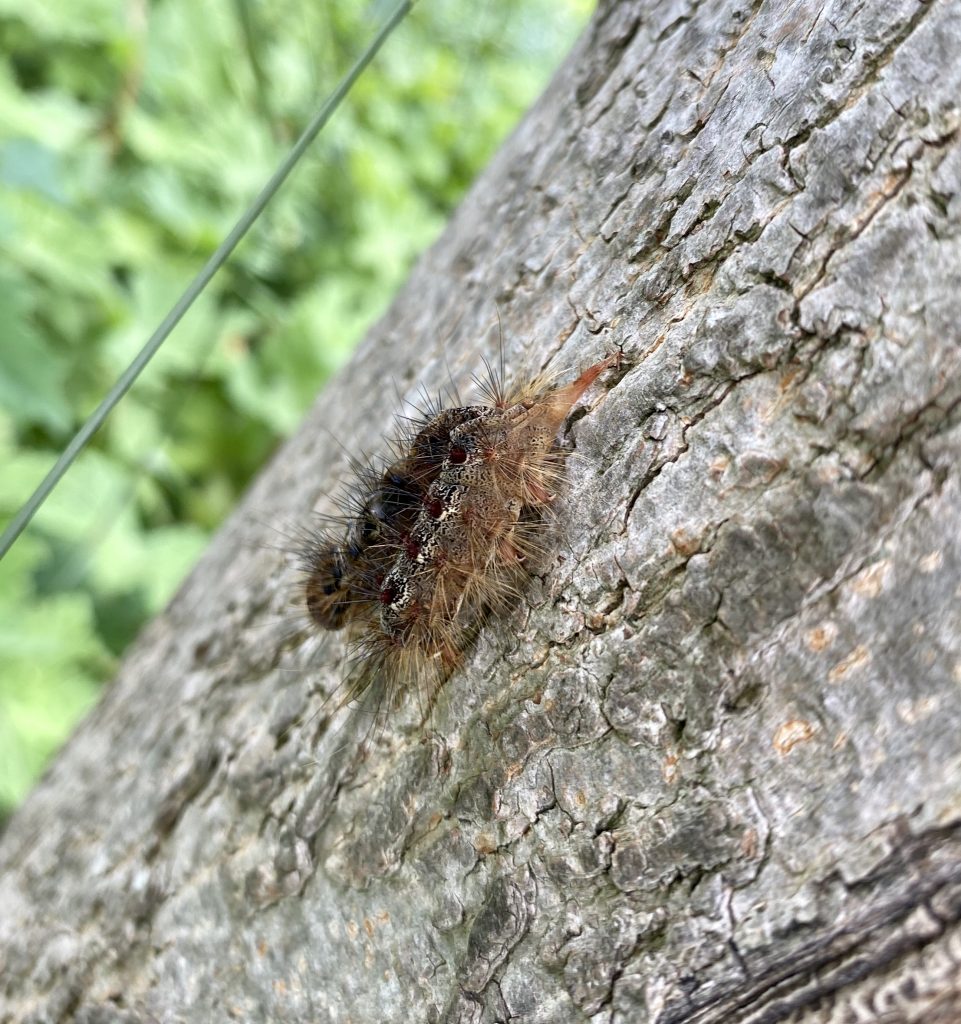
Gypsy Moth Traps and Removal
Removal
Caterpillars and pupae can be handpicked and crushed. The long hairs on the caterpillar can cause skin irritation or allergic reactions in some people, so make sure to wear gloves as a precaution. When an egg mass is found, it should be scraped off with a knife and dropped in a bucket filled with hot water and soap, household bleach or ammonia.
Burlap Traps
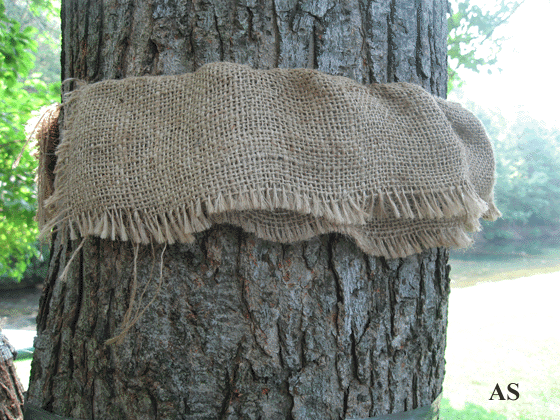
Wrap a 45cm (17 inch) wide strip of burlap around the trunk of the tree at chest height. Tie a string around the centre of the burlap and fold the upper portion down to form a skirt (with the string acting as a belt). The caterpillars will crawl between the folds to escape the sun. Later, return and lift the burlap. Pick off the caterpillars and dispose of them in a container of soapy water or diluted bleach.
You can install burlap strips at the end of April until mid-August.
Pheromone Traps
Store-bought traps can be hung in trees to encourage the capture of male moths, preventing the growth of the gypsy moth population. Traps with the specific pheromone can be bought online.
Natural Insecticide/Oil *These products are only encouraged as a last resort*
Dormant oil with lime sulphur can be applied to trees in late winter, and will smother eggs before they hatch.
Bacillus thuringiensis kurstaki (BTK) is a selective biological insecticide that controls caterpillars. Other insects, mammals, birds and fish are not affected.
**Please consult an expert before using any pesticide or chemical – these products are not always universal.
Further resources
Ontario.ca Gypsy Moth Information
City of Hamilton Gypsy Moth Information
